Buenos Aires It is one of the most attractive cities in South America and of course a essential visit in a tourism trip to Argentina.
Apart from a first-rate architectural complex, which materializes an urban development that is included in the tentative list of the World Heritage for the Unesco, Buenos Aires It stands out for its cultural, commercial, gastronomic and nightlife offer.
Cosmopolitan and elegant cityOn the one hand it looks like a European city. but as soon as you spend a few days there, you discover that it is something different. In reality, there is no comparable city in the world.
Here you are pleasantly surprised by the amount of cafes and restaurants, from local composer and libraries, all open until late at night.
A city that is famous for its grills and its discos, for its antique shops and the widest avenue in the world, for its cemeteries and soccer fields, for its opera house and street demonstrations, where you can follow the footsteps of Borges and Evita, is undoubtedly a unique city.
It takes several days to do a general tour of the city and normally all visitors are willing to return when they have the opportunity to do so.
All the information in detail
The best to see and visit in Buenos Aires
To organize a visit of Buenos Aires We have divided the city by neighborhoods, highlighting the attractions of the six main ones: Microcentro, Puerto Madero, San Telmo, La Boca, Congreso and Recoleta, although there are many other interesting places in other neighborhoods.
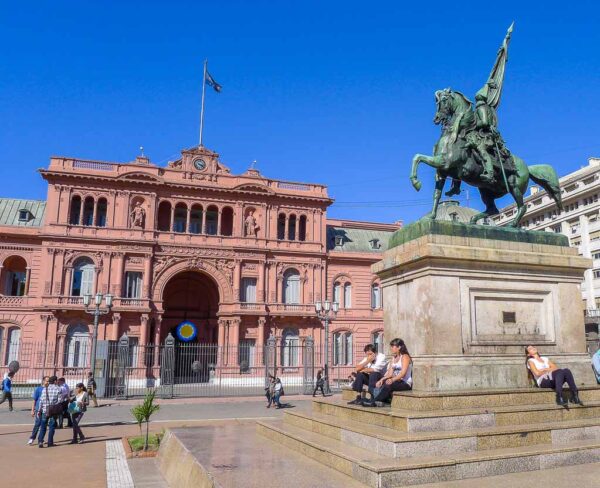
Plaza de Mayo in Buenos Aires
El Microcentro It is the place where much of the history, politics and finance of the Argentine capital is concentrated and therefore where many of its representative buildings are located.
The core of this entire area is the Plaza de Mayo, where the city is considered to have been founded, a large space formed by two squares joined together after the demolition of the building that separated them, so the current dimensions are barely a century and a half old.
It is a place of passage, meeting and where demonstrations of all kinds are always held.
There are several monumental buildings that overlook the square.
Among them stands out the Casa Rosada, headquarters of the Argentine Government. A curiosity is that the façade that overlooks the square is not the main one, but rather the rear one.
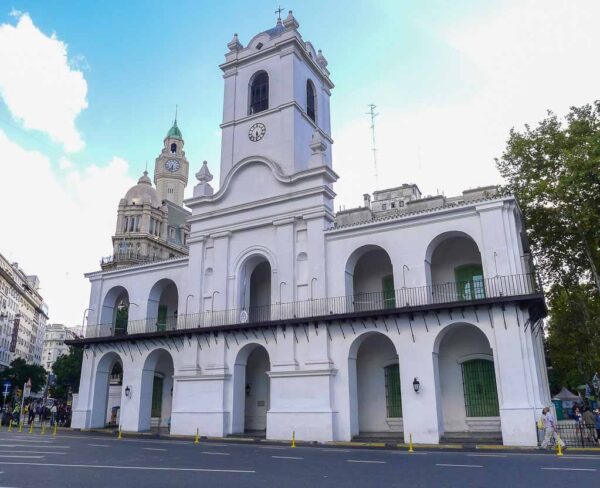
In the May Plaza there is also the Metropolitan Cathedral, Cabildo and a side call Apple of Lights.
In this last set we must highlight the church of San Ignacio, the oldest in the city.
In the Microcentro there are many museums and other buildings of interest, among which we must especially mention the Central Post Office and Pacific Galleries, which speak of the architectural splendor of this city at the end of the 19th century and the beginning of the 20th century.
Apart from the monumental issue, the Microcentro It stands out for its bustling and commercial atmosphere.
La Florida street, pedestrian, is the axis of this area where there are many cafes and restaurants, bookstores, clothing stores, etc.
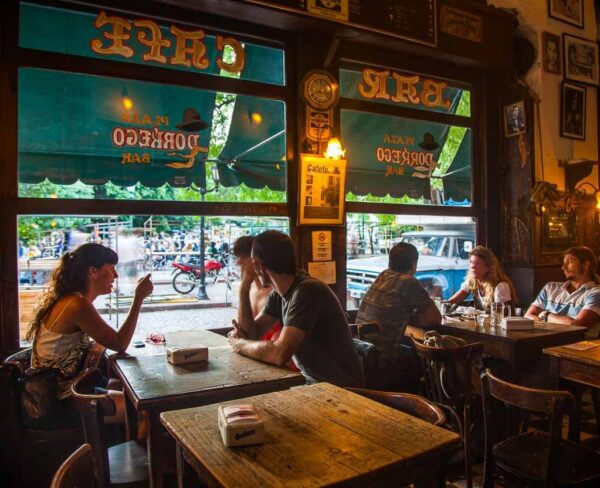
From the almost complete May Plaza the May Avenue that, after crossing the Avenue July 9, reaches the Congress.
When traveling along this road full of interesting buildings, you can make a stop at the Tortoni coffee (at number 825), a French-style cafeteria with more than a century and a half of history.
Puerto Madero in Buenos Aires
The inhabitants of Buenos Aires are known as Porteños, but the city always turned its back on the port, which was its origin and reason for being.
Puerto Madero It is a port area that in recent decades has been recovered for the city, becoming an area to walk and, in addition, take advantage of the offer of design shops and good restaurants.
ORGANIZE your TRIP
- Don't forget your TRAVEL INSURANCE with a 5% discount
- Book the HOTEL for your trip
- RENT a CAR for your trip
- The best TOURS and EXCURSIONS in Spanish
- NO-LINE TICKETS for museums and monuments
- Best FREE TOURS around the world
- Book your TRANSFER from the airport
- eSIM card with INTERNET at the best price

Many of these stores have opened in former port facilities.
When walking through the port, the presence of the frigate Sarmiento.
Built at the end of the 19th century, it was the first Argentine flagship and went around the world dozens of times.
In any case, the most interesting building in all Puerto Madero is Fortabat Museum, also known as Amalita Collection, which shows one of the sets of Argentine and international art most important in the country.
San Telmo neighborhood in Buenos Aires
San Telmo It is one of the oldest and most interesting neighborhoods in Buenos Aires.
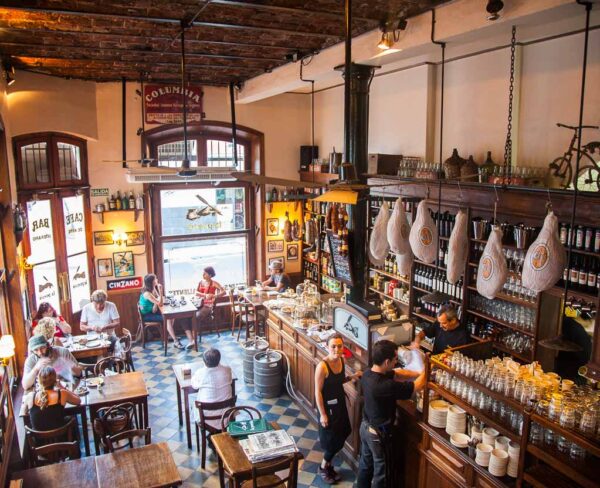
Buildings of colonial origin, narrow cobblestone streets and a special atmosphere created by the abundance of cafes, artists' workshops, antique shops, restaurants, bookstores and markets, as well as street markets, make it one of the main tourist destinations in Buenos Aires.
The center of the neighborhood is Dorrego square, in which on Sundays a antique market that has been spreading to the adjacent streets.
The place also attracts craft and used book sellers, as well as musicians and dancers who put on tango shows.
There are several museums in the neighborhood, but one of the most curious visits is to the Zanjón de Granados.
It is a set of tunnels and wells from the first third of the 18th century that, well restored, form an exciting window to the city's past.
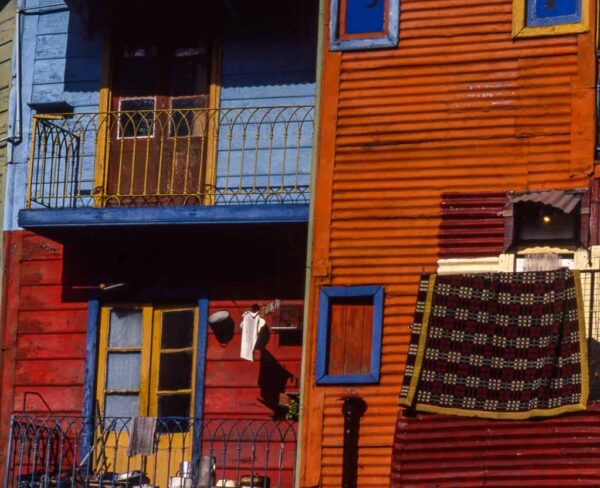
La Boca neighborhood in Buenos Aires
La Boca It is one of the most characteristic neighborhoods in Buenos Aires.
Located around the mouth of the Riachuelo, where one of the city's most important ports was located, was the place where many of the immigrants who arrived from Europe settled at the end of the 19th century.
The custom of using the remains of paint from loading and unloading barges to paint houses was the origin of the multicolored facades of buildings.
DON'T FORGET YOUR TRAVEL INSURANCE
Are you organizing your travel to Argentina? Don't leave without take out your travel insurance before, and here we explain why. If you hire it with us, you have a 5% discount.
The street that attracts the most visitors is Caminito.
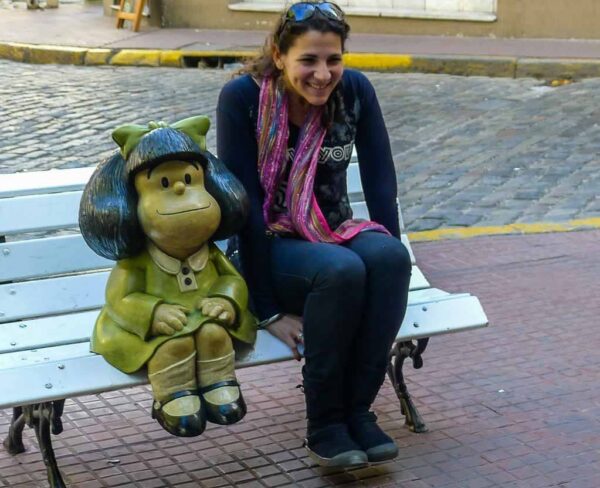
There are always craft stalls and painters offer their works. Although most of the work is not particularly good, it is usually possible to find the work of really talented painters who sell their paintings very cheap.
For your trip to the capital of Argentina, it will be very useful to know which are the best Tours and guided visits in Buenos Aires which you can sign up for, with information also on excursions, shows and thematic Free Tours
The most unique structure of La Boca is Nicolás Avellaneda ferry bridge, one of only eight left in the world, including the Vizcaya Bridge between Portugalete and Guetxo, near Bilbao.
We must not forget that in this neighborhood there is the Bombonera, Boca Juniors stadium, very special for fans of Maradona worldwide.
Don't forget your Travel Insurance
Are you organizing your trip or getaway? Don't leave without take out your travel insurance before, and here we explain why. If you hire it with us, you have a 5% discount
Obelisk on Avenida 9 de Julio in Buenos Aires
La Avenida 9 de Julio, which is said to be the widest in the world, is one of the most emblematic in all of South America. You have to explore it either on foot, by taxi or bus.
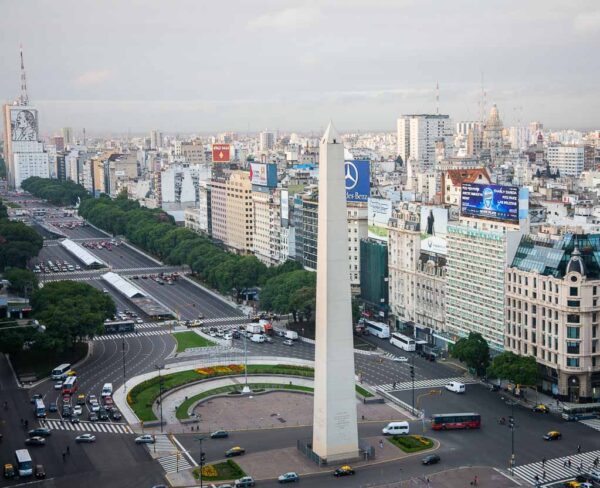
The most characteristic element is the obelisk, 67 meters high.
It is located at the intersection of the avenue with the Corrientes Street and North Diagonal, It was built in 1936 to commemorate the fourth centenary of the founding of the city and is one of the favorite meeting points of the porteños, especially for sports celebrations.
Actually, Congress is the continuation of Microcentro on the other side of the Avenue July 9.
The building with the greatest historical and cultural value on the avenue is the Colon Theater, one of the most important in the world for its performances of opera, ballet and classical music concerts.
One of the most impressive buildings in this neighborhood is the one that gives it its name, the Palacio del Congresso, whose image is undoubtedly inspired by the Washington Capitol.

Recoleta neighborhood in Buenos Aires
Recoleta is elegant neighborhood of Buenos Aires. It is characterized by its opulent Parisian-style buildings and its abundant parks.
La Alvear Avenue, which begins just behind the palace of the France embassy, at the northern end of the Avenue July 9, is the axis of the neighborhood and where the most spectacular mansions and the most expensive stores are concentrated.
Following the avenue. You reach a set of gardens among which some truly striking trees stand out for their size.

The greatest of all is the one known as Gomero de la Recoleta, gum Planted in 1781, it is considered the oldest in the city.
Its base is about 10 meters in diameter and some branches reach 30 meters.
This gum It is located in front of the entrance to the Recoleta cemetery, one of the most famous in the world, where there are a huge number of pantheons of famous people from the history, politics and art of Argentina, including that of Avoid Perón.


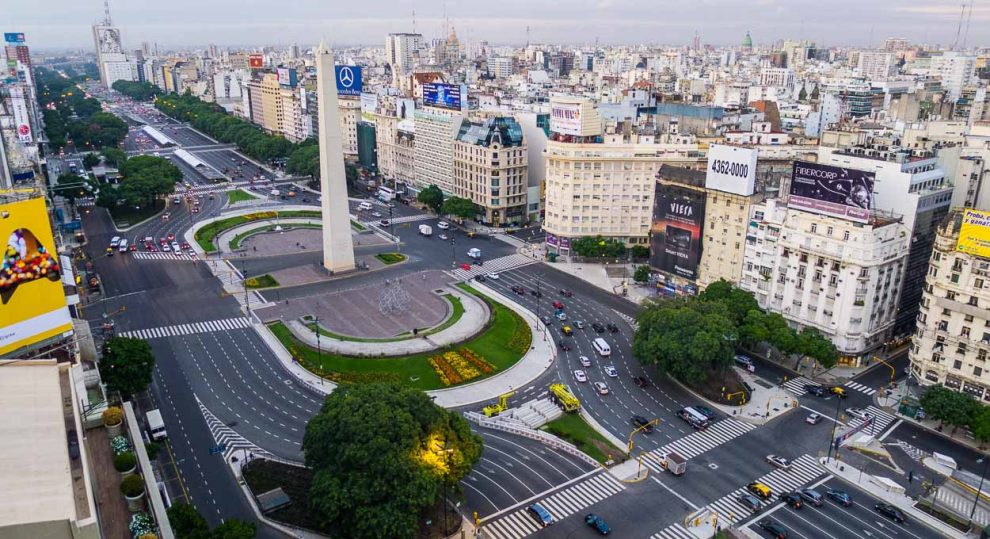








Comment